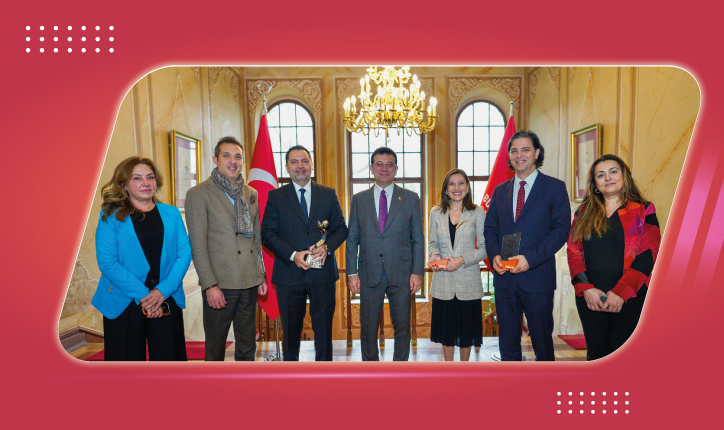-
Publish Date11.12.2019
- Subscribe
-
Share
Air Quality At Metro Is Getting Better
Istanbul Metropolitan Municipality started works to improve air quality at metros in accordance with the national legislation. Data collected from the vehicles, platforms, ticket halls are going to be analysed, the results are going to be assessed, and particles are going to be destroyed at source. Works are aimed to reduce PM 10 value at metros.
Istanbul Metropolitan Municipality started works to improve air quality at metros that is preferred by more than 2 million people for transportation every day. Istanbul Metropolitan Municipality Affiliate Metro Istanbul and Istanbul Metropolitan Municipality Environmental Protection Directorate carry out the project together. Data is going to be collected by Particulate Matter Sampling Device and the collected samples are going to be examined and then the source of the relevant particles are going to be determined and destroyed at source.
We are going to share the results with the people of Istanbul
Chief of Metro Istanbul Energy and Environmental Management Ismail Adiyil informed that they carry out measurements regularly at metros and they evacuate the polluted air via 80 cubic meter capacity ventilators and said, “We are going to carry out measurements at world standards and determine the quality of the air at metros. Then we are going to work on methods to improve these results afterwards. Our next step is going to be to focus on either destroying the dust and particles at source or decreasing the amount. Our aim is to provide more sterilised breathing zone”.
Adiyil emphasised the importance of using high standard measurement device to get scientific data on air quality and underlined that ordinary devices would not provide reliable data. Adiyil said, “We are going to carry out this work with competent people and get support from universities and engineers of Environmental Protection Directorate of Istanbul Metropolitan Municipality so we can get reliable results and we want to share these results with the public. We are aiming to improve air quality so it can be much better”.
Experts are going to analyse the air
Professional Environmental Engineer of the Environmental Protection Directorate of Istanbul Metropolitan Municipality Bahar Tüncel indicated that they carry out various measurements on contaminative matters such as particle matter, carbon monoxide, nitrous oxide and ozone at 26 different stations. Bahar Tüncel also said, “We are going to carry out measurements at 6 designated stations of M2 Yenikapi-Haciosman and M4 Kadikoy-Tavsantepe Lines with 10 days period. We are aiming to determine the figures of the quality of the air that the passengers and employers breathe. We are aiming to improve the relevant values stated in our national legislation known as Air Quality Assessment and Management Regulations. We are going to conduct improvement works based on the results of the analysis”.
Tüncel clarified the principles of Particulate Matter Sampling Device and informed that it has the ability to get very fine dust samples from its chimney section by drawing 2,3 cubic meter air. Tüncel added that they are going to have the opportunity to gather samples on filter and determine the particles via automatic analysers throughout the period. Tüncel indicated, “We are going to change the filters automatically after a day of assessment. Then we are going to conduct element analyse works of gathered samples and finally, we are going to determine air quality and find the source of contaminative matters and then we are going to carry out improvement works”.
What is PM10?
Particle Matters possess risks for human health because they contain heavy metals such as mercury, lead and cadmium along with carcinogenic chemicals. These poisonous chemicals transform into acids when they conjugate with humidity. Inhaling components such as soot, fly ash, exhaust particles of petrol and diesel vehicles and coal tar for long periods can cause serious damage to health, because they contain hazardous matters.
Our nose filters matters that are bigger than 10 microns but the matters that are smaller than 10 microns go to lungs via inhalation than to bronchus and accumulate there. Matters that are 1-2 diameter wide, get to capillary vessels and the ones are smaller than 0,1 diameter can get into the blood via capillary vessels.
Tüm Etkinlikler
Metro Istanbul Receives an Award from PERYÖN in Diversity and Inclusion Field
İstanbul Metropolitan Municipality's subsidiary, Metro Istanbul, has been honored with the Diversity and Inclusion Award at the Human Values ...
read more




